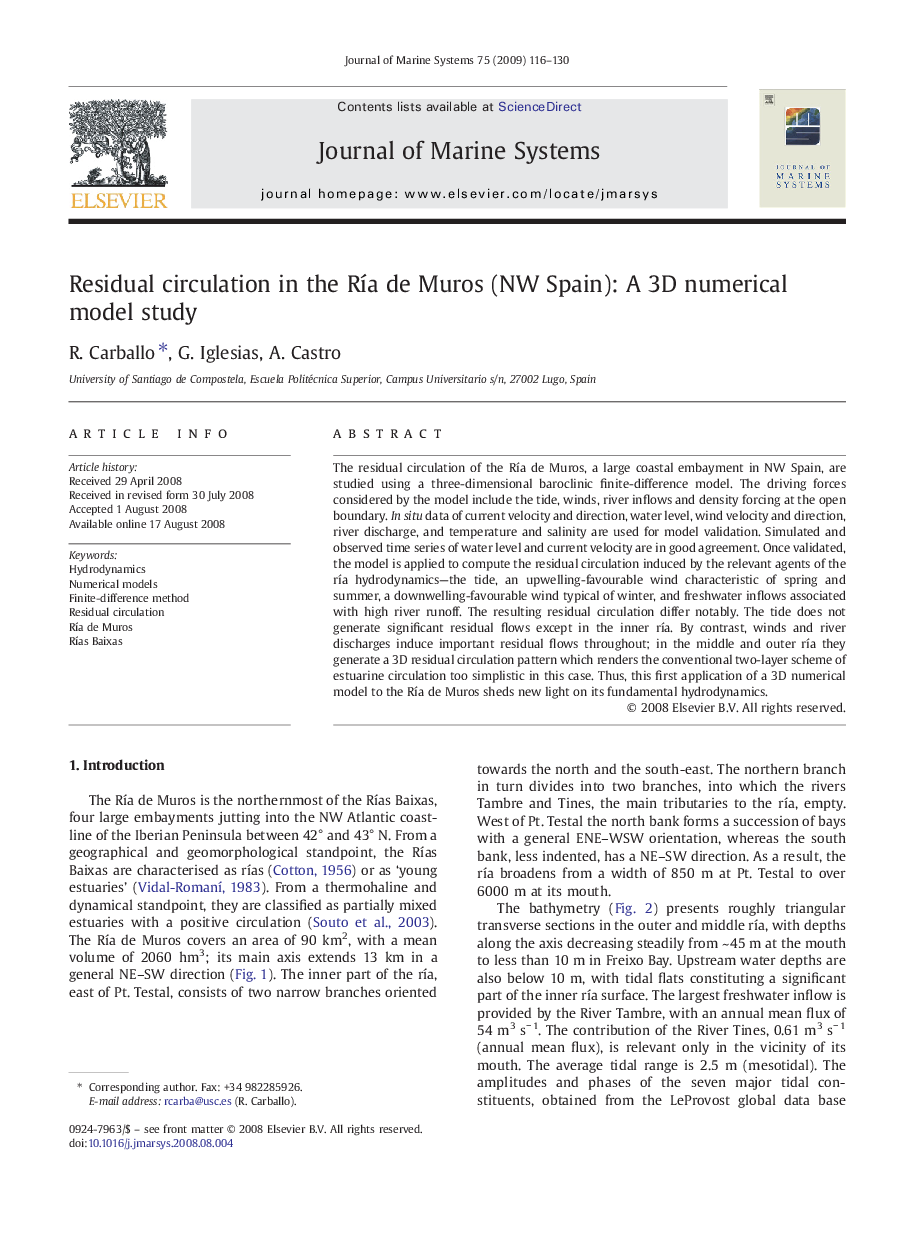| Article ID | Journal | Published Year | Pages | File Type |
|---|---|---|---|---|
| 4548910 | Journal of Marine Systems | 2009 | 15 Pages |
The residual circulation of the Ría de Muros, a large coastal embayment in NW Spain, are studied using a three-dimensional baroclinic finite-difference model. The driving forces considered by the model include the tide, winds, river inflows and density forcing at the open boundary. In situ data of current velocity and direction, water level, wind velocity and direction, river discharge, and temperature and salinity are used for model validation. Simulated and observed time series of water level and current velocity are in good agreement. Once validated, the model is applied to compute the residual circulation induced by the relevant agents of the ría hydrodynamics—the tide, an upwelling-favourable wind characteristic of spring and summer, a downwelling-favourable wind typical of winter, and freshwater inflows associated with high river runoff. The resulting residual circulation differ notably. The tide does not generate significant residual flows except in the inner ría. By contrast, winds and river discharges induce important residual flows throughout; in the middle and outer ría they generate a 3D residual circulation pattern which renders the conventional two-layer scheme of estuarine circulation too simplistic in this case. Thus, this first application of a 3D numerical model to the Ría de Muros sheds new light on its fundamental hydrodynamics.
